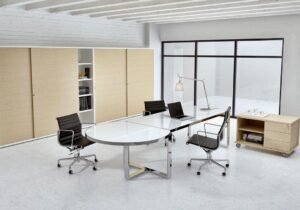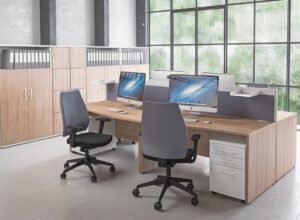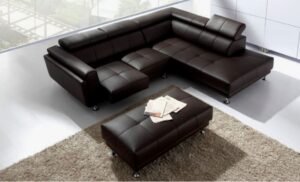In the evolving landscape of corporate environments, the Meeting Table has emerged as a central element in shaping productive and collaborative spaces. From traditional boardrooms to flexible co-working hubs, a well-chosen table plays a critical role in facilitating discussions, enhancing communication, and creating a professional ambiance. In modern office settings where teamwork, innovation, and strategic planning dominate day-to-day operations, the table is far more than just furniture—it’s a hub for ideas, negotiations, and decision-making. As companies prioritize functionality and aesthetics equally, selecting the right table can directly influence the overall workflow and impression of the workplace.
Choosing the Right Meeting Table for Your Office Environment
When selecting a table, one of the first considerations is understanding the intended use of the space. Will the table host formal board meetings, internal team huddles, or client presentations? The functionality should match the table’s size, shape, and features. Round or oval meeting tables are ideal for collaborative discussions, promoting equal participation and visual contact among team members. On the other hand, rectangular and boat-shaped tables are more suited for structured meetings where a head-of-table setup is needed. Material and finish are also vital in determining the table’s appeal and durability. Options such as solid wood, engineered surfaces, or tempered glass can complement the office’s design language while providing a practical surface for daily use. Additionally, modular and foldable meeting tables are gaining popularity in dynamic workspaces where flexibility and adaptability are priorities.
Meeting Table Design Trends for a Productive Office
Modern offices are shifting toward designs that combine functionality with minimalist aesthetics. Clean lines, neutral colors, and integrated cable management systems are now expected in any high-quality meeting table. Features like power outlets, USB ports, and hidden compartments for technology integration make the table more versatile and future-ready. Ergonomics also play a significant role—tables should be paired with comfortable chairs, offer ample legroom, and be at an ideal height to reduce strain during long meetings. Another rising trend is the incorporation of eco-friendly materials and sustainable manufacturing practices in office furniture, including meeting tables. Brands are responding to this demand by offering responsibly sourced wood, recyclable metal frames, and low-VOC finishes, helping businesses meet green certification goals while promoting a healthy work environment.
The Impact of a Meeting Table on Company Culture
Beyond its physical presence, a table influences team dynamics and company culture. It fosters an environment of open dialogue, equality, and idea-sharing when positioned strategically in the workplace. A collaborative meeting space encourages employees to voice opinions, brainstorm freely, and engage in productive conflict resolution. Furthermore, the table can reflect the company’s identity and values. For instance, a sleek, glass-topped table might convey a sense of innovation and modernity, while a classic wooden design can suggest stability and tradition. The placement of the table, lighting above it, and even the surrounding decor contribute to the atmosphere of the space, affecting how participants perceive and engage in meetings. Therefore, careful consideration should be given to how the meeting table aligns with the organization’s overall tone and mission.
How the Right Meeting Table Enhances Client Impressions
First impressions matter, especially when hosting clients, investors, or partners. A well-designed and properly maintained meeting table communicates professionalism, attention to detail, and readiness. The choice of the meeting table, along with other room elements like lighting, seating, and presentation tools, speaks volumes about the brand’s quality and commitment. Clients entering a meeting room form instant judgments based on layout and cleanliness. An impressive meeting table, free of clutter and paired with modern technology, signals efficiency and preparedness. Furthermore, if the table is large enough to seat all participants comfortably and facilitate the sharing of documents or digital presentations, it adds to the overall positive experience. As a focal point in the meeting room, the table should inspire confidence and set the stage for meaningful conversation and collaboration.
Meeting Table Placement and Room Layout Considerations
The placement of a meeting table within a room can make a significant difference in the room’s usability and comfort. A central position often works best for larger spaces, allowing equal access from all sides. In smaller rooms, the table should be scaled accordingly to prevent crowding while still providing adequate seating and movement space. One key factor is the circulation area—there should be enough room for people to walk around the table without obstruction. Another consideration is sightlines. Ensure that every participant has a clear view of any presentation screen, whiteboard, or speaker. Good acoustic design, proper ventilation, and lighting all enhance the meeting experience around the table. Some companies choose to install sliding partitions or acoustic panels to make meeting rooms more versatile. When combined with a thoughtfully selected table, these enhancements can drastically improve functionality and comfort.
Customization and Branding Through Your Meeting Table
Many businesses are now exploring the opportunity to customize their meeting tables to reflect brand colors, logos, or core values. A branded table doesn’t just serve as a conversation starter—it reinforces the company’s identity. Whether it’s a laser-etched logo on the table surface, color-coordinated edges, or a custom-built shape to match office interiors, there are endless ways to make your table stand out. In competitive industries, this subtle branding can leave a lasting impression on stakeholders and clients. Some tables are even designed to highlight innovation, featuring rotating sections, integrated screens, or dual-level designs. These customizations not only showcase creativity but also demonstrate the company’s investment in creating a high-performing workplace.
Investing in a High-Quality Meeting Table Pays Off
While it may be tempting to opt for a low-cost or basic table, investing in a high-quality table is a smart long-term decision. A durable and well-constructed table reduces the need for frequent replacements, saving costs in the long run. High-end tables also tend to age better, maintaining their appearance and functionality for years. Maintenance is often simpler as well, with surfaces that resist scratches, stains, and general wear. Moreover, quality tables come with manufacturer warranties and support, ensuring peace of mind. Whether you’re setting up a new office or upgrading your current meeting room, choosing the right meeting table is a strategic investment that supports productivity, collaboration, and brand image.
Conclusion: Make the Meeting Table the Heart of Your Workspace
Ultimately, the meeting table is much more than a piece of furniture—it’s the heart of your workspace. It brings people together, sparks conversations, and serves as a foundation for innovation and teamwork. With careful selection based on size, design, material, and functionality, businesses can create an inviting and effective environment for both employees and visitors. Whether you’re a startup, a growing enterprise, or an established corporation, your meeting space deserves thoughtful planning, starting with the centerpiece: the meeting table.






